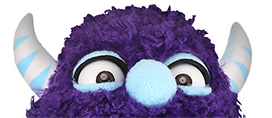Thor, Norse Myths and the History of the Vikings
By: FUN Monster
The Norse people include those who were a part of the Germanic people who lived in Scandinavia between the years 800 and 1300 AD. Norsemen were a part of the Viking Age and they were traders, settlers, and warriors who roamed throughout Europe. The mythology of this unique culture includes myths and folklore that told stories of heroes and gods.
Some of the major gods included Thor, Odin, and Loki, although there were numerous deities that featured prominently in these tales. Norse mythology generally focuses on the adventures and experiences of gods as they interact with other gods, humans, and other beings. Sometimes the gods interact with friends, and other times the stories depict conflicts with foes.
Both stories and poems are used in Norse mythology. The characters in the myths often had supernatural powers, which they may have used toward good or bad ends. Aside from the gods and goddesses, Norse mythology also included characters such as elves, dwarves, trolls, giants, and other creatures such as magical squirrels, hawks, and more!
Norse mythology had a strong spiritual connection for the Vikings, and they used the tales to both entertain and educate. The stories and poems were passed orally from generation to generation.
Arguably the most popular god in Viking mythology was Thor, who earned the name "God of Thunder." Thor was the son of Odin, and his mother was a giantess named Fjörgyn.
Thor was the strongest god, and he had red hair and a red beard. Thor's hammer Mjolnir was his weapon of choice, which he used to hit his foes over the head when they made fun of him. Thor's wife was Sif, and they lived in a massive house that's said to have had 540 rooms. Thor and Sif had two children, as well as another stepson that Thor adopted. Thor had another son with a giantess named Járnsaxa.
Odin was Thor's father, and he was another major character of Norse mythology. Odin was known for his tireless pursuit of wisdom, and he could also give wisdom to others. Odin was the divine patron of the rulers and outlaws, and he was both a war-god and a poetry-god. Odin was a ruler who used magic to achieve his wishes, and he wasn't above using devious and sinister methods. Odin possessed a single, piercing eye, while the other eye socket remained empty.
Loki was another god in Norse mythology. Loki's lineage varies throughout the stories, depending on the source. In some myths, Loki is working in unison with other gods, and sometimes he works against them.
Loki was also known for his shape-shifting abilities, enabling him to change into different people and animals. One story featured both Thor and Loki, and it involved Loki and Thor's wife Sif interacting before Thor came onto the scene and threatened Loki with his hammer. Loki backed down before Thor followed through with his threat.
Norse myths begin with stories about creation of the Earth and the first humans. The tales also depict Odin's adventures, how Thor got his hammer, why Odin has only one eye, Odin's great sacrifice, travels of Thor and Loki, legendary duels of Thor, and a final battle between the gods and the giants.
Ragnarök is the final battle that led to the destruction of the cosmos. Ragnarök is an Old Norse word that translates into "fate of the gods." At the end of the battle, Thor and Jörmungandr fought with Thor killing Jörmungandr. Unfortunately, Jörmungandr succeeded in spewing enough venom onto Thor before he died, which caused Thor to also perish.
After Thor's death, what remained of the Earth sunk into the sea. Ragnarök was considered a prophecy of future events, and the Vikings believed it was symbolic of their own future on Earth.
Learn More About Thor, Odin, Loki, and Viking Mythology
- Top 15 Myths and Misconceptions About Vikings
- Gods of Thunder: Myths and Mythological Characters (PDF)
- Norse Mythology
- Norse Mythology: Legends of Gods and Heroes (PDF)
- Vikings and Norse Mythology
- Classical and Norse Mythology: More Alike Than We Think? (PDF)
- The Twelve Most Important Gods in Norse Mythology
- Norse Mythology
- A Guide to Norse Gods and Goddesses
- Vikings and Gods in Fictional Worlds (PDF)
- Norse Gods
- Vikings
- The Norse Gods
- Stories of Norse Gods and Heroes (PDF)
- Gods in Norse Mythology
- Norse Gods and Goddesses
- A Handbook of Norse Mythology (PDF)
- List of Norse Gods and Goddesses
- Where Did the Norse Myths Come From? (PDF)
- Norse Gods: A-Z List
- Thor
- Norse Mythology or the Tales of North Men (PDF)

